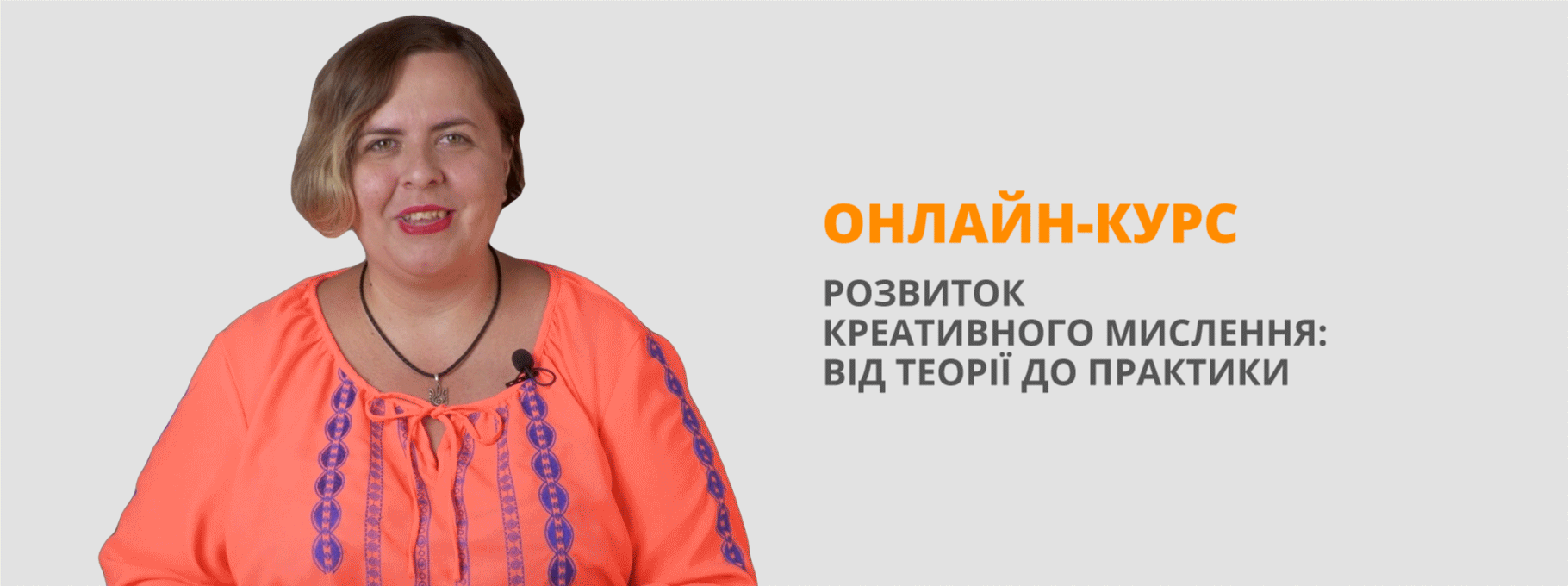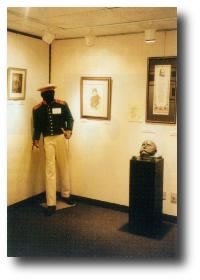Конспект уроку на тему:"Народний співець України"
КОНСПЕКТ
МУЗЕЙНОГО УРОКУ
НА ТЕМУ:
" National Bard of
Ukraine"
вчитель СЗШ №99
Алекса О.В.
Oksana Aleksa
a teacher of English 31.10.2014
school # 99
L'viv
The lesson is dedicated to the 200th anniversary of the famous Ukrainian poet T.Shevchenko.
The lesson is recommended to be held in the museum. The lesson is based on the collecting materials about Taras Shevchenko from different resources, mainly from the Internet. The motto: "Shevchenko is Ukraine and Ukraine is Shevchenko."
Form: 10
Subject of the lesson is " The National Bard of Ukraine".
Objectives: 1.Practical Aim:
-to revise and extend basic vocabulary;
-to talk about Shevchenko;
-to describe Shevchenko museum giving information about the things in it;
-to tell his biography using presentation;
-to practice asking and answering questions of all types;
2. Developmental Aim:
-to develop pupil's reading, speaking, listening and writing skills;
-to stimulate creative initiative and extend pupils' memory, attention, imagination (through various kinds of activities);
-to activate the use of logical thinking vertical and lateral;
3. Educational Aim:
-to improve knowledge about the great bard of Ukraine;
-to deepen pupil's knowledge about Shevchenko museum;
4. Cultural Aim:
-to revise and consolidate the information about T. Shevchenko;
Equipment: a crossword, hand-outs, a notebook, pictures, an embroidered towel, video presentations.
Lesson Procedure
I Introduction
-Greeting.
- Presentation of the topic and the aims of the lesson
II Warming-up activity.
-Video-slides" Shevchenko's life".
III Main Part.
-presentation" The biography of Shevchenko";
-dialogical speech about Shevchenko;
-crossword;
-reciting poems;
-listening :
- watching the video "About Shevchenko museum in Toronto",
- answering the questions;
- retelling the text with the help of pictures
-;writing.
-reading: "Shevchenko museum in Toronto "
-A play "Nazar Stodolia"
IV Summing-up:
-summarizing the lesson
-marks;
V Home Assignment.-find the information about the 3rd death mask;compare 2 museums
Introduction
Greeting
Good morning, dear pupils and guests!
- We have gathered here in Sheptytsky museum to speak about a great man, an outstanding person of Ukraine known both in our country and abroad. This person proclaimed Ukraine and glorified it in his poems. This person showed his great talent and honoured Ukrainian traditions. That is why it is impossible to speak about the Ukrainian literature without speaking about this person. He was the man who had the largest and most comprehensive soul. People all over the world can’t stop admiring his great talent. Taras Shevchenko… The brilliant poet, the greatest of the great. And this year we celebrate the 200th anniversary of the famous Ukrainian poet and playwright. That is the reason we’re here. And today the theme of our lesson is" The National Bard of Ukraine" and we are going to speak about his life and work, about his paintings and plays, hear some poems written by T.G. Shevchenko and a lot of other useful information. So I would like to start our lesson with a short presentation…
-Warming-up
Slide-show .
……… and guess the major facts from Shevchenko's biography.
Pupils watch slides and after watching them they try to guess what facts from Shevchenko's biography they will speak about.( early years, the place where he was born, his studying, his paintings, his poems and plays, his first collection of poems "Kobzar", the place where he was buried.)
-Main part
We can't imagine our life without poems and plays of Shevchenko, without his love to Ukraine and fighting for its independence. Every person in the world knows his well- known "Testament" and Ukraine is proclaimed in all his poems. They are closely connected and glorified. That's why pupils have prepared the presentation about Shevchenko's life and you have an opportunity to watch it.(pupils comment the slides). And now let's watch a presentation about Taras Shevchenko.
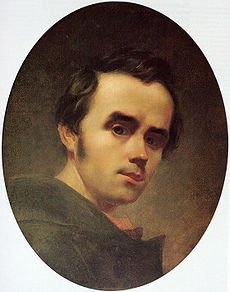
Artist, poet, national bard of Ukraine, Taras Shevchenko was born on 9 March, 1814 in Moryntsi, Kiev gubernia. He was born a serf. When he was a teenager he became an orphan, and grew up in poverty. When he was 14, his owner, Engelhardt took him to serve as a houseboy. And Taras travelled with him to Vilnus and to St Petersburg. In Vilnus Taras for the first time heard different languages, Lithuanian, Russian and Polish and there he saw people whom their masters made free. When Engelhardt noticed the boy’s skiils in painting he apprenticed him to the painter Shiriayev for four years.
At that time the young man met his compatriots Zoshchenko, Hrebinka, Hryhorovych, and Venetsianov, they showed his works to the famous Russian artist Karl Bryullov. Shevchenko’s paintings impressed Bryullov, and he decided to help him. Karl Bryullov painted a portrait of the Russian poet Zhukovsky and disposed it in a lottery. The money was used to buy Shevchenko’s freedom from Engelhardt in 1838.
Shevchenko entered the Academy of Fine Arts in St Petersburg, there he became a student of Bryullov. Shevchenko was awarded three silver medals for his works and later he had become an Academician in engraving.
Studying at the Academy T. Shevchenko understood that his main calling, his true passion was poetry. In 1840 he published his first collection of poems “Kobzar”. In 1841 followed the epic poem “Haidamaky”, in 1844 the ballad “Hamalia”.
When he graduated from the Academy, he became a member of the Kiev Archeographic Commission. In 1846 in Kiev he entered the secret Cyril and Methodius Brotherhood. It was a secret political society, in 1847 it was smashed, and Shevchenko was arrested and sent to the Orenburg special corps, he was deprived the right to draw and write. 10 years of exile ruined his health, and Shevchenko became seriously ill. When he was released in 1857 it was forbidden to him to live in Ukraine. He moved to St Petersburg but on March 10, 1861 the great poet died of heart disease. He was buried in St Petersburg, but his friends wanted to fulfill the poet’s wish that he had expressed in his “Testament” and they transferred his remains to the Chernecha Hill near Kanev, in Ukraine.
Shevchenko’s works take an important place in Ukrainian literature and history. His literary output consists of the collection of poetry “Kobzar”, the drama “Nazar Stodolia”; two dramatic fragments; nine novelettes, a diary, and an autobiography in Russian; and over 250 letters.
Shevchenko was an outstanding poet and a highly accomplished artist. There are 835 works written by him, although 270 are known to have been lost. His collection also contains over 150 portraits, 42 self-portraits. There are many landscapes, watercolours and etchings
-Dialogical speech
Now we' ll see if you were attentive and if you know the biography of T.Shevchenko well. Answer the questions:
. 1)When was T.G. Shevchenko born?
а)May 9,1814; b) March 9,1814; c) March 10, 1841;
2)How old was T. Shevchenko when he became orphaned?
а)10; b) 8; c) 11;
3)Who helped T. Shevchenko to buy his freedom from P. Engelhardt?
а)K.Bryulow; b) P. Engelhardt; c) V.V.Shyriayev;
4) In exile he was forbidden to …
a)draw and write b) speak c) sing
5) Shevchenko's father's name was…
a) Ivan b) Mykola c) Grygoriy
1)b; 2)c; 3)a; 4)a; 5)c.
-Finish the sentences
1 Shevchenko was born in …(Moryntsi)
2 His childhood he spent in…(Kyrylivka)
3 Shevchenko's parents were…(serves)
4 Taras's sister was called…(Kateryna)
5 In Engelhardt Taras served as a …(houseboy)
6 Shevchenko's freedom from Engelhardt was bought in…(1838)
7 T.G. Shevchenko studied at …( St.Petersburg Academy of Arts)
8 10 years he spent in …(exile)
9 Shevchenko died in…(1861) and was buried in St.Petersburg.
10 Later he was reburied and now Chernecha Mountain is called…(Tarasova)
-Crossword
We've already learnt some information about T. Shevchenko and now we can recollect our knowledge and make the crossword. Your task is to write key-words into gaps.
1 T. Shevchenko was born in the village of….(Moryntsi)
2 The most famous book of poems is…(Kobzar)
3 Except writing he could….(paint) very well.
4 How long has Shevchenko been in exile….(10)
5 Where was Shevchenko buried….(Kaniv)
6 Continue the line"I was 13. I herded lambs beyond the…(village)
7 Shevchenko is a poet, an artist and a….(playwright)
8 What woman's name connects a poem and his picture(Kateryna
9 In what poem does the girl become a tree…(poplar)
10 What Ukrainian money have a portrait of T.Shevchenko(100)
|
|
|
|
|
|
|
|
|
|
|
|
|
|
|
|
|
|
|
|
|
|
|
|
|
|
|
|
|
|
|
|
|
|
|
|
|
|
|
|
|
|
|
|
|
|
|
|
|
|
5 |
|
|
|
|
|
|
|
|
|
|
|
|
|
|
2 |
|
|
k |
|
|
6 |
|
|
|
|
|
|
|
|
|
|
|
k |
|
|
a |
|
|
v |
|
|
|
|
|
|
|
|
|
1 |
m |
o |
r |
y |
n |
t |
s |
i |
|
|
|
|
|
|
|
|
|
|
|
b |
|
|
i |
|
|
l |
|
|
|
|
|
|
|
|
3 |
|
|
z |
|
|
v |
|
|
l |
|
|
|
|
|
|
|
|
p |
|
|
a |
|
|
10 |
|
|
a |
|
|
|
|
|
7 |
p |
l |
a |
y |
w |
r |
i |
g |
h |
t |
|
g |
|
|
|
|
|
|
|
|
i |
|
|
|
|
|
u |
|
|
e |
|
8 |
k |
a |
t |
e |
r |
y |
n |
a |
|
|
|
|
n |
|
|
|
|
|
|
|
|
|
|
|
t |
|
|
|
|
|
d |
|
|
|
|
|
|
|
|
|
|
|
9 |
p |
o |
p |
l |
a |
r |
|
|
|
|
|
|
|
|
|
|
|
|
|
|
|
4 |
t |
e |
n |
|
|
|
|
|
|
|
|
|
|
|
|
|
|
|
|
d |
|
|
|
|
|
|
|
|
|
|
|
|
|
|
|
|
|
|
|
|
|
--Reciting poems
Sometimes we say that Taras Shevchenko is Ukrainian Kobzar. And this is really so. We can't imagine our life without his poems, his beautiful pictures and plays. Today we've prepared some poems to be recited by our pupils for you. I think you'll like them in English translation.
The mighty Dnieper roars and bellows,
The wind in anger howls and raves,
Down to the ground it bends the willows,
And mountain-high lifts up the waves.
The pale-faced moon picked out this moment
To peek out from behind a cloud,
Like a canoe upon the ocean
It first tips up, and then dips down.
The cocks don’t crow to wake the morning,
There’s not as yet a sound of man,
The owls in glades call out their warnings,
And ash trees creak and creak again.
The mighty Dnieper roars and bellows
I was thirteen. I herded lambs
Beyond the village on the lea.
The magic of the sun, perhaps,
Or what was it affected me?
I felt with joy all overcome,
As though with God....
The time for lunch had long passed by,
And still among the weeds I lay
And prayed to God.... I know not why
It was so pleasant then to pray
For me, an orphan peasant boy,
Or why such bliss so filled me there?
The sky seemed bright, the village fair,
The very lambs seemed to rejoice!
The sun's rays warmed but did not sear!
But not for long the sun stayed kind,
Not long in bliss I prayed.
...
I was thirteen
When I am dead, bury me
In my beloved Ukraine,
My tomb upon a grave mound high
Amid the spreading plain,
So that the fields, the boundless steppes,
The Dnipro's plunging shore
My eyes could see, my ears could hear
The mighty river roar.
When from Ukraine the Dnipro bears
Into the deep blue sea
The blood of foes ... then will I leave
These hills and fertile fields --
I'll leave them all and fly away
To the abode of God,
And then I'll pray ....
But till that dayI nothing know of God.
bury me, then rise ye up
And break your heavy chains
And water with the tyrants' blood
The freedom you have gained.
And in the great new family,
The family of the free,
With softly spoken, kindly word
Remember also me.
MY TESTAMENT
Close by the house the cherries flower,
Above the orchard the beetles hum,
Still singing, the girls homeward come,
The tired plowmen's steps grow slower,
And mothers with supper wait at home.
Close by the house they eat their supper;
Just then the evening-star appears;
As daughter serves. Her mother cares
To teach to do things in ways proper.
The nightingale's song interferes.
Close to the wall on the clay-benches
The mother lulls her Nell and Bill,
And falls asleep ... But the sweet wenches
And nightingales are singing still.
LISTENING
-There are a lot of museums all over the world. And we'll speak about one of them in today's lesson. It is the Shevchenko museum in one city.
- While watching video your task will be to name the city where the museum is situated.
VIDEO (tape-script)
We're in the library of T. Shevchenko museum, Canada and the collection here as you can see is very large. It's one of the best Shevchenko's libraries in the world and it has 125 Kobzars. They're complete poetry of T. Shevchenko in print. We have a book of list that was published when Shevchenko was still alive in 1860 so this collection is a very valuable.The museum's library has provided information to many people interested in life and times of Shevchenko.
I'm Andrew Gregorovych, the president of Shevchenko's museum here in Toronto, Canada. Our museum was originally founded in 1952 but a fire destroyed the museum and this particular occasion inside of Toronto was established in 1995. So it functioned for 15 years. Our museum is mainly about a great poet and talented artist T. Shevchenko who lived from March 9, 1814 to March 10, 1861. He was 47 years old. He suffered from Russian empire. He was arrested by the Russian police least then 3 times and was exiled by the tsar of Russia to Siberia. He became a soldier so broke his health.
In our exhibit we have a great man of Kobzar, a book of poetry collected by Shevchenko. Kobzar basically shows what Shevchenko was. He was unusual. He helped to establish a literary language of Ukraine just as Dante formed the Italian language, as Shakespeare did the English language. So three of them made a contribution into the development of literary languages. Shevchenko had a great influence on the literary language of Ukraine.
Here we have examples of very first Kobzar of T. Shevchenko published in 1840 in St. Petersburg, the Russian capital of that point. And we have the collection of some '' Kobzars'' here. We have total unbelieved 125-130 kobzars of Shevchenko. One interesting thing about Shevchenko is that there are many monuments around the world. According to the cultural director of museum in Kyiv we were told that there are over 600 monuments to Shevchenko around the world: in Paris, in the USA, in Washington DC, Canada and many other countries in the world.
Here we have a famous portrait, a self-portrait of Shevchenko which he printed in 1840 in the same year as his book of poetry came out. He was a poet and an artist by profession and he was a genius in poetry and painting. This particularly self-portrait was created the same year when his book of poetry was published in 1840. Next to Shevchenko here we have painting by him ''Kateryna'' which is one of his stories about the maiden who became pregnant and was deceived by the lover. It's one of the great paintings of T. Shevchenko and it represents his talent and he's genius as an artist.
And we have a very important collection in the next room. On this wall we have the works of Shevchenko, the portrait of Iry Oldrich. He was responsible for friendship between two of them. He didn't speak Ukrainian and Shevchenko didn't speak English but they were friends. Shevchenko's self-portrait here is a copy of photograph and here we have the most valuable item in our exhibit. It is the death –mask of Shevchenko probably done in March 11, the day after he died.
I was in the studio of T. Shevchenko in St. Petersburg's Academy of Arts and it's normally closed in 1999 and they have a stereo how Shevchenko died. Here we have a portrait of Shevchenko and dozens of photographs of Shevchenko because it was the time when the photography was starting. And in the corner here we have a Russian army uniform that he worn. This is the replica of uniform that Shevchenko had when he was 10 years in exile in Siberia. That was used in a film ''T. Shevchenko'' by Bodnarchuk, who was the prominent actor. The film was called "Taras Shevchenko".
-So tell me, please what is name the city where the museum is situated?
-It is Toronto.
-Questions on the text
1 What facts about the museum have you heard?
2 How many Kobzars are there in the museum?(125)
3 When was the museum founded?(1952)
4 Did Shevchenko establish literary language of Ukraine?(Yes)
5 How many monuments to Shevchenko are there all over the world?(600)
6 What can you say about the portrait "Kateryna"?(It is about the maiden who became pregnant and was deceived by the lover.)
7 When did Shevchenko paint a self –portrait? ( 1840- the same year when his book of poetry came out).
8 What is the most valuable thing in the museum's collection? ( a death-mask).
9 What did Shevchenko wear in exile? ( a Russian army uniform )
10 Who has made a film about Shevchenko and what was its name? (Bodnarchuk, " Taras Shevchenko")
-Retelling the text using pictures

-Writing
Fill in the gaps
|
1952 |
genius |
death |
1995 |
Shevchenko |
125 |
Canada |
Kobzar |
fire |
St.Petersburg |
T.Shevchenko museum in Toronto ---------------was originally founded in------------
but ---------------destroyed the museum and it was established in-----------again. In the exhibit the museum has a book of poetry -------------collected by --------------. It was published in 1840 in------------------and they have ---------------Kobzars in the museum.
The-------------mask of Shevchenko probably done in March, 11 the day after he died is the most valuable thing there .Shevchenko was a poet and an artist by profession and he was a----------------in poetry and painting.
-Reading
We continue getting some information about Shevchenko museum and we are going to read some more facts about it. After reading your task will be to ask each other questions on the text.
|
The Taras H. Shevchenko Museum, owned and operated by the Taras H. Shevchenko Museum and Memorial Park Foundation, is a non-profit corporation, founded by the Association of United Ukrainian Canadians, for the purpose of popularizing the life and work of the Bard of Ukraine, and the contribution of Canadians of Ukrainian descent to the social, economic and cultural life of Canada. |
|
|
Unfortunately, the original Museum, including its valuable collections, was destroyed by arson in September 1988, and in December 2006, the 3-metre bronze Shevchenko statue was stolen.
Today's Museum, unique in the Western world, is similar in size to the original, but has amassed collections far superior in size, quality and variety, including extensive research materials.
These efforts, and the ongoing cultural work of the Foundation are entirely financed by personal donations from our friends and supporters.
The central focus of the Musem are exhibits dedicated to the art, life and literary legacy of the founder of the modern Ukrainian language. On display are many editions of his Kobzar (poetry), just some of the over 120 in the Museum's collection.
As well, the Museum has artistic copies of Shevchenko's creations in many genres, all of professional museum quality, specially commissioned in Ukraine for this Museum.
Not all the exhibits available are on display at any one time, but are rotated on a regular basis to correspond with various themes from the life and work of the Bard of Ukraine.
Shevchenko has been twice celebrated as a cultural leader of world acclaim by UNESCO.
(Possible questions and answers)
1 Whom was Shevchenko museum founded by? (It was founded by the Association of United Ukrainian Canadians)
2 Why did the Ukrainian Canadians founded the museum? (For the purpose of popularizing the life and work of the Bard of Ukraine)
3 Where is the museum located? (In Toronto)
4 When was the original museum open? (1952)
5 What territory did the museum take? (It takes a 16 acre park near Oakville, Ontario)
6 In what reason was the monument to Shevchenko put in America? (on the 60th anniversary of Ukrainian immigration to this country.)
7 What was the museum destroyed by? (by arson)
8 When was the 3-metre bronze Shevchenko statue stolen? (in December 2006)
9 What is today's museum like? (Today's Museum, unique in the Western world, is similar in size to the original, but has amassed collections far superior in size, quality and variety, including extensive research materials).
10 How many times has Shevchenko been celebrated as a cultural leader of world acclaim by UNESCO? (Shevchenko has been twice celebrated as a cultural leader of world acclaim by UNESCO).
A PLAY "NAZAR STODOLIA"
Today in our lesson we've heard a lot of information about Taras Shevchenko, sang songs, recited poems, made a crossword and our pupils have prepared one more thing for you. It's a play, a famous play "Nazar Stodolia". As we know Shevchenko loved and honoured Ukrainians traditions and proclaimed them in his poems and plays. As we are in the museum of Ukrainian art we must support Ukrainian traditions too. That's why while watching the play you must say what Ukrainian traditions Shevchenko used in his play .
N- Come here, my darling. Are you cold? Take my coat, sit down and rest a little. G – Oh, my love! How nice is to sit near you, to see you! But I'm afraid my father will be angry. N – Don't be afraid, my bird, only love me. I thought than… G- What? What did you think about? Maybe something bad? N- Never mind. I won't think about something bad when I'm so happy today. Oh my heart, didn't you tell your father you wouldn't marry the officer? G – How could I tell it if he didn't say anything about the officer! N- Let the God forgive him his signs. G-Don't say such words! Let's go somewhere and we always be happy! N- But where shall we go? G- To the paradise. But where is it? N- Don't ask me now. I know nothing. We'll go there where there are neither officers nor your father. There will be only freedom and happiness. Our life will be brilliant. I'll build a house and you'll be the queen of it. I will never die if you are next to me.
G- Yes, my heart. But it is so difficult. I always think about my dad. He'll be very angry. N -Don't be afraid. We'll go to Zaporizhian city, then to the church and marry and nobody can part us. G- Oh, Nazar. I have something for you. I embroidered and earned money for it by myself. I give it to you and agree to marry you. N –Thank you, darling. But take it. You'll give it to me tomorrow again. G- Don't you like it? Throw it away if it's bad. I'll embroider another one but I don't know when.( sadly) N- Don't be sad. I hope everything will be OK. Hug me. We must be happy.
Discssuion When a girl agrees to marry a man she gives him an embroidered towel. If she doesn't agree to marry him she gives him a pumpkin.
Summing upOur lesson is coming to the end. So let's sum up the information about T. Shevchenko. Who is he? (a poet, an artist, a playwright, a national bard, a great man, a revolutionary writer, a fighter for freedom, a national hero). Having explained the words around Shevchenko's portrait we can surely say that T.Shevchenko is Ukraine and Ukraine is Shevchenko.

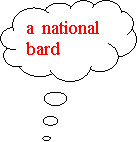


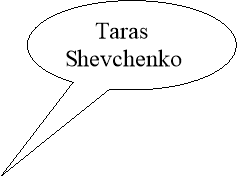
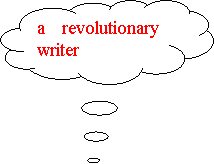

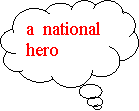
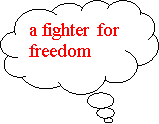

Використані джерела:
- слайд-фільм – 3 хв.53 с.- 15 фотографій Про Шевченка
- текст з презентаціі – http://www.native-english.ru/topics/taras-shevchenko Тарас Шевченко.
- відео – 6 хв.7 с.- www.youtube.com/watch?v=dE2xgWrQDf0 Музей Шевченка в Торонто.
- текст для читання – 411.ca › ON › Toronto › Museums Про музей Шевченка в Торонто.
1

про публікацію авторської розробки
Додати розробку
